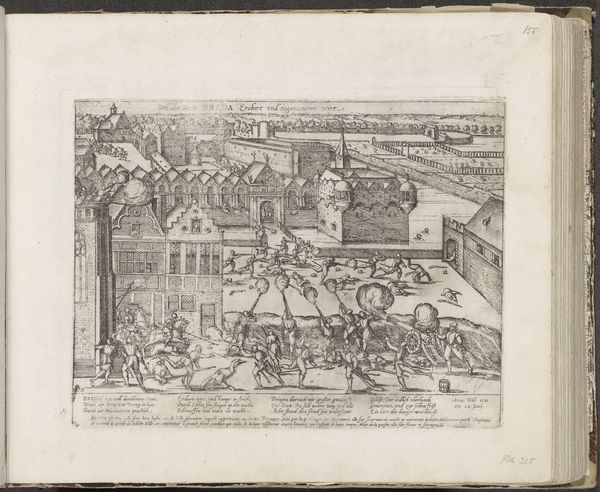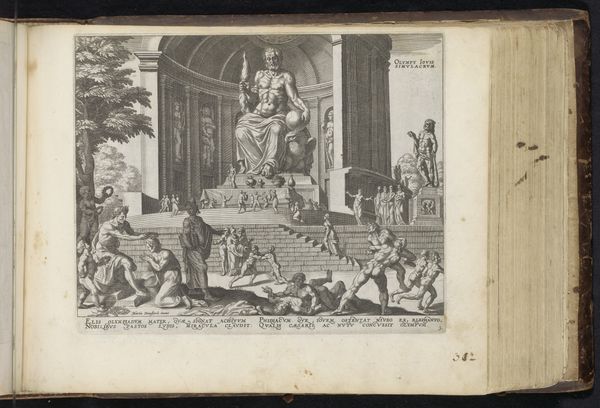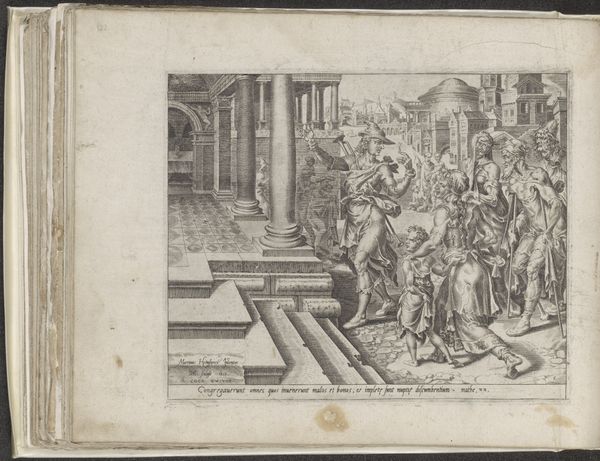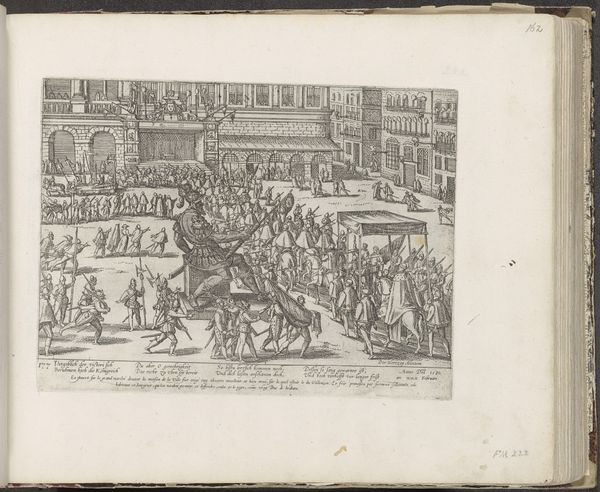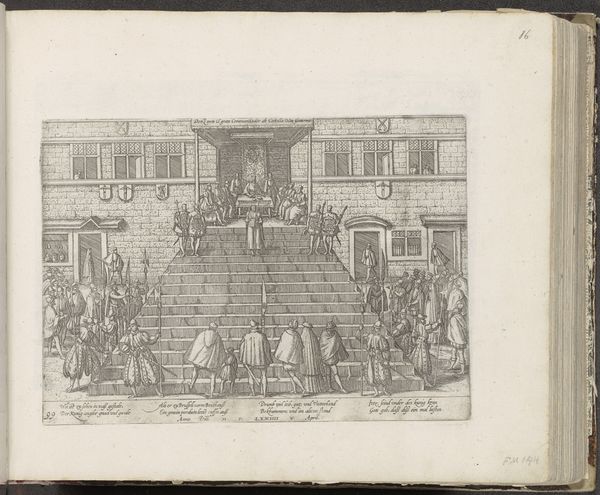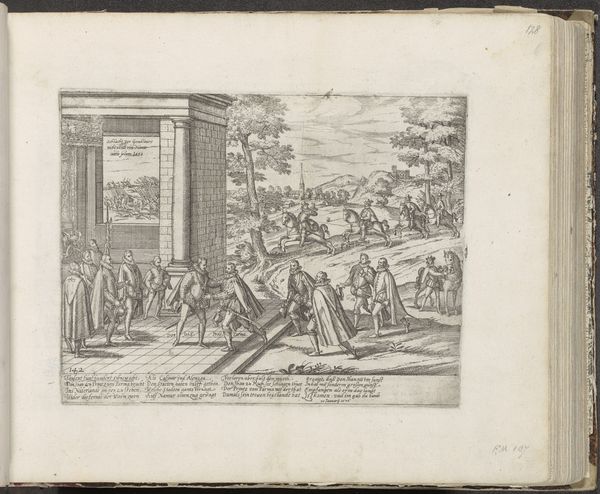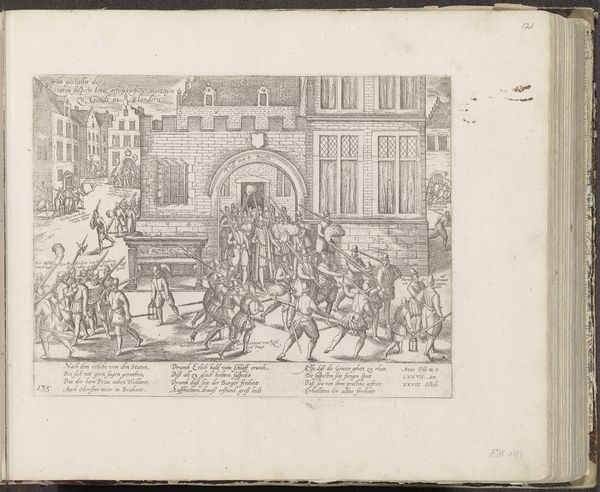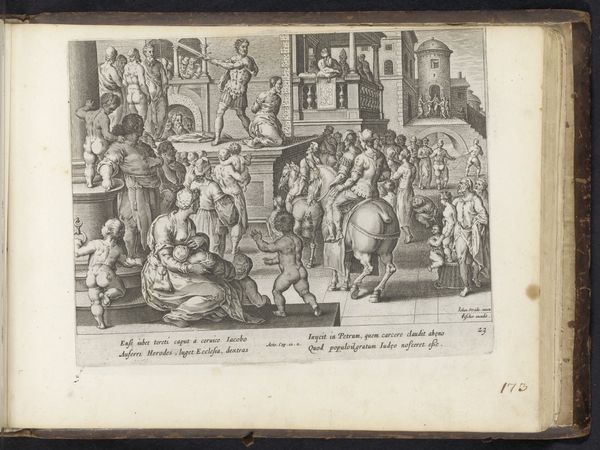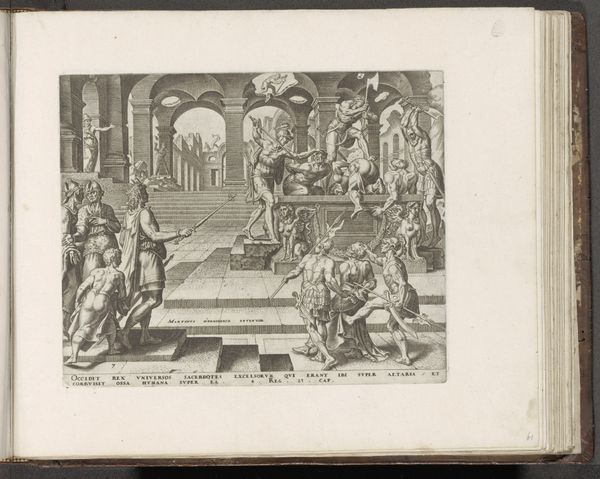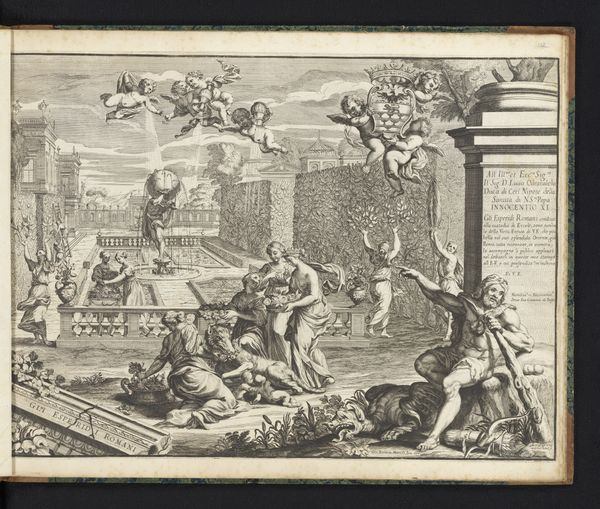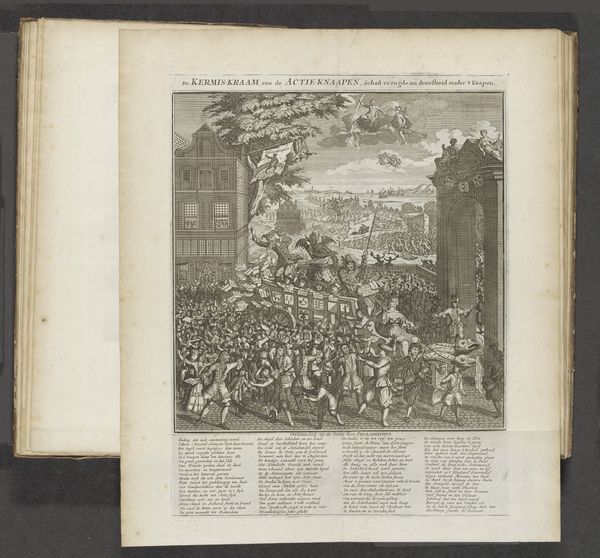
print, engraving, architecture
# print
#
landscape
#
11_renaissance
#
history-painting
#
engraving
#
architecture
Dimensions: height 212 mm, width 260 mm
Copyright: Rijks Museum: Open Domain
Editor: Here we have Philips Galle’s "Temple of Diana at Ephesus," an engraving likely created between 1572 and 1646. The immense structure depicted looms large, contrasted by the ant-like figures working below. The building dominates the whole composition. What sort of impact do you think that depiction would have had on viewers? Curator: It’s vital to understand the print within the context of the rise of architectural treatises and the dissemination of knowledge about the ancient world. Galle's print visualizes an attempt to reconstruct this Wonder of the World. The "Diana Ephesia Templum" wasn't just an image; it participated in a discourse about history, power, and even civic identity. Do you notice how the architecture blends classical ideals with contemporary design? Editor: Now that you mention it, I see that blend! It's not just a historical record. Curator: Exactly. This representation served a public role. Galle's choice to showcase a bustling construction scene does a couple of things: firstly, it reflects a preoccupation with antiquity that captivated audiences during the Renaissance. The question for me is always about impact: who was intended to view this and how were they intended to engage with the architectural, intellectual and political messages layered within? Editor: That's fascinating, reframing this as a carefully constructed visual argument rather than just a depiction. Curator: Precisely. And one thing that stands out to me is, in his other images of wonders of the world, this "dramatis personae" seems a bit similar. Galle has used very familiar elements in creating the feel and mood of the works in this series of images. He knew his market well, so can we assume the socio-political setting was identical? Probably not. Editor: Thanks, that’s definitely shifted my perspective on how prints like this circulated ideas about history. It is not an "innocent" depiction as it appears initially. Curator: Indeed. Remembering art is not created or viewed in a vacuum is always a key message.
Comments
No comments
Be the first to comment and join the conversation on the ultimate creative platform.
